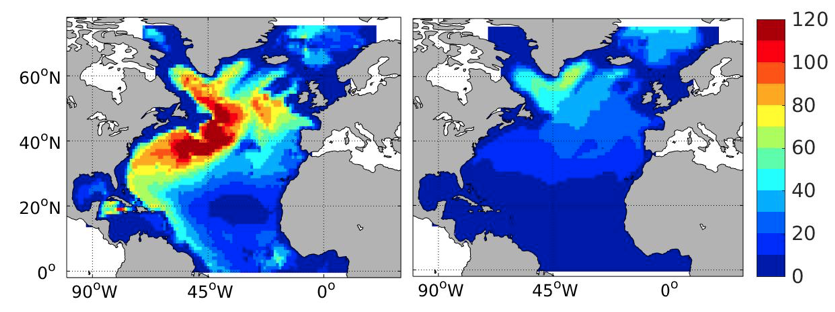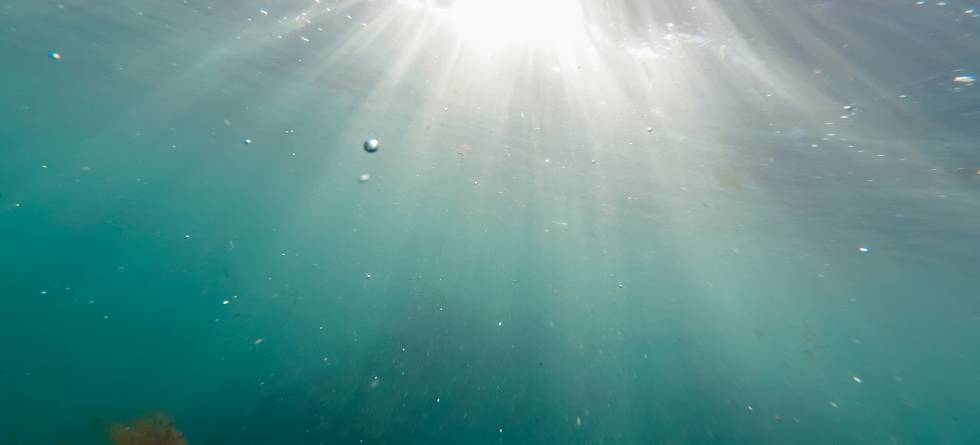The carbon uptake ability of the North Atlantic is linked to high-latitude mechanisms. These mechanisms allow a large fraction of anthropogenic carbon to be stored in the deep ocean.
– Models that simulate these mechanisms within observational uncertainties, show a later slow down of the future North Atlantic carbon uptake than previously estimated, Nadine Goris says.
She is a researcher at Uni Research and the Bjerknes Centre for Climate Research, and has now published a new study on modelling the carbon uptake in the North Atlantic, together with other colleagues from the Bjerknes Centre. This study is part of the SNACS project, which quantifies Subpolar North Atlantic variability and its impact on the carbon cycle.
The uncertain ocean
the Paris agreement, the United Nations Framework Convention on Climate Change has agreed to limit anthropogenic greenhouse gas emissions to not exceed a response of a globally 1.5°C warmer world. Here, the ocean is an important player in this agreement as it currently takes up about 23% of our anthropogenic carbon emissions.
With ongoing climate change, the ocean’s ability to take up CO2 is very likely going to be reduced. The result will be a larger fraction of CO2 in the air, Goris says.
Within the global ocean, the North Atlantic and the Southern Ocean are the areas that take up most anthropogenic carbon. Yet, model projections do not agree about the future carbon uptake potential of these regions. Goris stresses the need for a clear picture of the future uptake ability of the oceans as it would allow a better constrain on the amount of carbon that can still be emitted by humankind before we reach a 1.5°C warmer world.

An efficient carbon pathway
In an investigation of 11 different models and their simulations of a future with high atmospheric CO2, Goris and colleagues showed that these models disagree about the future carbon uptake potential of the North Atlantic and that this disagreement originates in high latitudes.
Out of the 11 investigated models, some models showed two mechanisms that relate to an efficient carbon pathway to the deep ocean: (i) an efficient removal of carbon from the surface through deep winter mixing and biological production and (ii) storage of a large fraction of their contemporary anthropogenic carbon below 1000 m depth. Models that revealed such an efficient carbon pathway showed a larger uptake of carbon in the future than models with a less efficient carbon pathway.
– When looking at observations, we saw that they confirm the efficient carbon pathway. This gives us reason to believe in those models that showed the same behavior, Goris says.
She highlights that researchers need to depart from the concept of more or less randomly chosen models when trying to estimate a future behaviour. Instead, she advises to focus on models that are in good agreement with key mechanisms.
This need is also listed in the last the IPCC-report, but it is often a challenge to identify key mechanisms. For the carbon uptake of the North Atlantic, Goris and colleagues succeeded.
Reference:
Goris, N., J.F. Tjiputra, A. Olsen, J. Schwinger, S.K. Lauvset, and E. Jeansson, 2018: Constraining Projection-Based Estimates of the Future North Atlantic Carbon Uptake. J. Climate, 31, 3959–3978, https://doi.org/10.1175/JCLI-D-17-0564.1


